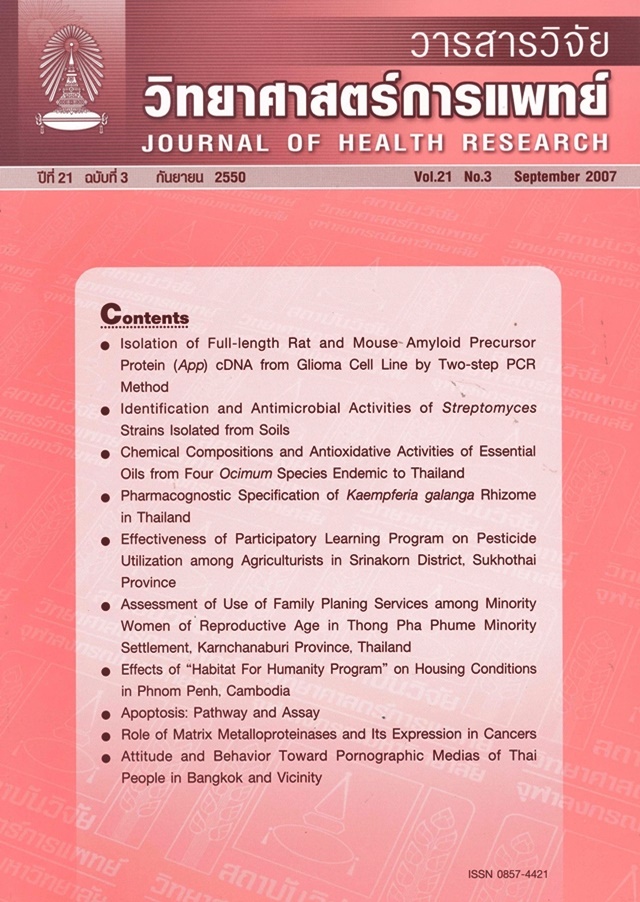Chemical Compositions and Antioxidative Activities of Essential Oils from Four Ocimum Species Endemic to Thailand
Keywords:
Ocimum basilicum, O. canum, O. gratissimum, O. sanctum, chemical constituent, antioxidative activitiesAbstract
Ocimum basilicum, O. canum, O. gratissimum, and O. sanctum were studied for their essential oil constituents by hydrodistillation from their aerial parts and then analyzed by Gas Chromatography-Mass Spectrometry (GC-MS). It was found that the individual essential oil contained both terpenoids and phenylpropanoids of which methyl chavicol (92.48 %), citral (71.99 %), and (Z)-β-ocimene (48.28 %) were major constituents of O. basilicum, O. canum, and O. ratissimum, respectively, while both red kaprao and white kaprao (O. sanctum) contained the same major constituent, methyl eugenol, 47.18 % and 53.67 % respectively. All essential oils were further studied on antioxidative activities, compared with standard vitamin E and butylated hydroxyltoluene (BHT), by DPPH (1,1-diphenyl-2-picrilhydrazyl) radical scavenging method and then the absorbance of DPPH was detected at 520 nm by UV spectrophotometer. The results had been shown in the effective concentration that decreases 50% of free radical (EC50). It was found that EC50 of α-tocopherol, BHT, essential oil of O. basilicum, O. canum, O. gratissimum, red kaprao, and white kaprao (O. sanctum) were 62.77, 19.77, 47057.45, 8343.19, 30.20, 343.56, and 767.82 μg/ml, respectively. Among these essential oils, O. gratissimum had shown the highest antioxidative activity which is higher than that of standard α-tocopherol.







